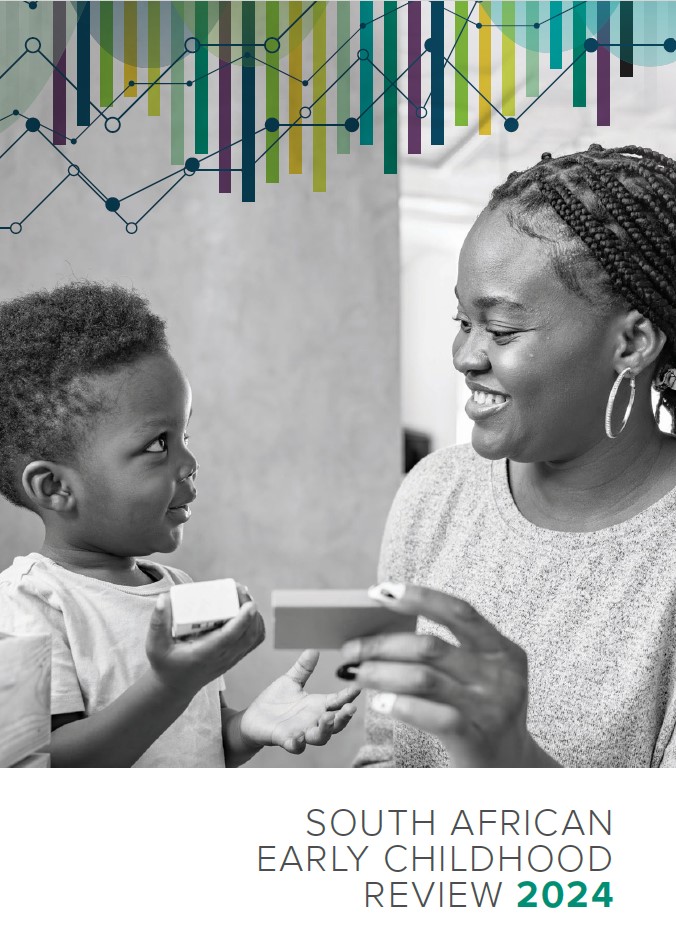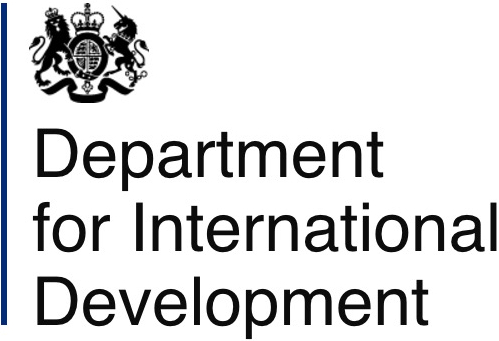 Income poverty & grants
Income poverty & grants
Foster Child Grants
Author/s: Katharine Hall & Paula Proudlock
Date: October 2025
Definition
This indicator shows the number of children who are accessing the Foster Child Grant (FCG) in South Africa, as recorded in SASSA's administrative data.Data
Source
South Africa Social Security Agency (2008-2024) Social grant statistics. Pretoria:SASSA.
Notes
SOCPEN figures are taken from the end of March each year (the financial year-end).
What do the numbers tell us?
The FCG is available to foster parents who have a child placed in their care by an order of the court. Foster care was designed for children who are placed with another family because they are in need of care and protection due to abuse, neglect or abandonment. Unlike the CSG, the FCG is not means-tested but is automatically paid to the foster parents of children who have been placed in their care. The monthly value of the grant was R1,250 from April 2025.
The absence of a means test and the relatively large value of the grant compared to the CSG is justified on the basis that the child is a ward of the state because a court has placed them in alternative care, and the state is therefore directly responsible for ensuring that all the child’s needs are provided for.
The number of children in foster care remained stable at around 50,000 nationally for many years when foster care was used primarily for children who were in need of care and protection or were awaiting adoption. However, from 2003, as HIV-related orphan rates rose sharply, the Department of Social Development and its social workers started encouraging family members to apply for foster care placements. They particularly encouraged grandmothers who were caring for orphaned children to apply for foster care placements because the value of the FCG was nearly three times that of the CSG.
Over the next decade, the FCG was increasingly used to provide poverty alleviation for orphaned children in kinship care. The appropriateness and effectiveness of this approach was questioned as far back as 2003, particularly because many children live with grandparents, aunts or other relatives anyway, whether or not their parents are alive. In 2022, for example, four million children – a fifth of the child population – did not live with either of their parents. Of these, 97% lived with relatives, mainly in households that included a grandparent. Less than one third were orphans. Nevertheless, with over half a million double orphans living with relatives, there were concerns that increasing demand for foster care placements would overwhelm the child protection system, which was not designed or resourced to process such large numbers of children.[1,2]
By 2010, more than 500,000 FCGs were in payment, and the foster care system was struggling to keep pace with the numbers due to the strict checks and balances required by law. These included initial investigations and reports by social workers, newspaper adverts, court-ordered placements, and additional two-yearly social worker reviews and court-ordered extensions of placements. SASSA is not allowed to pay the FCG without a valid court order or extension order, and it stopped paying more than 110,000 FCGs between April 2009 and March 2011 because of backlogs in the extensions of court orders. [3-5]
In 2011, a High Court-ordered settlement stipulated that the foster care court orders that had expired – or that were going to expire in the following two years – must be deemed to have been extended until 8 June 2013. This effectively placed a moratorium on the lapsing of these FCGs. As a temporary solution, social workers could extend orders administratively (without having to go to court) until December 2014, by which date a comprehensive legal solution should have been found to prevent qualifying families from losing their grants in future.[6] No legal policy solution had been developed by the 2014 cut-off date. The Department of Social Development sought (and received) an urgent High Court order extending the date to the end of 2017, which was then extended until the end of November 2019, then to November 2020, then November 2022, and finally to November 2023.
Two laws needed to be amended to enable a comprehensive legal solution. This process took over a decade to be completed. An amendment to the Social Assistance Act was passed by Parliament in 2020 to provide for a new CSG Top-Up (instead of the FCG) for orphaned children living with relatives.
The CSG Top-Up is more easily accessible than the FCG because the caregiver can apply directly at SASSA without first having to go through a social worker investigation and court placement. It also gives access to a grant that, although lower than the FCG, is close to the food poverty line – enough to cover the basic food needs for a child. Importantly, it is not at risk of being stopped every two years. The CSG Top-Up is set at one-and-a-half times the value of the CSG, so that for example when the CSG is R500 per month, the CSG Top-Up is R750. Implementation of the top-up started in mid-2022. By March 2023 there were 37,000 children receiving the top-up, and by March 2025 the number had increased to nearly 90,000.[7] Although uptake of the CSG Top-Up has been substantial, it has not been fast enough to offset the declining numbers of FCGs, and it is likely that many more orphans are excluded from these higher value grant amounts.
The Children’s Act also needed to be amended to clarify that orphaned children in the care of relatives should be referred to the CSG Top-Up, and that only those who are in need of supervised care and protection should be placed in foster care. After much debate, the Children’s Amendment Bill was finally passed by Parliament and signed by the President at the end of 2022.[8] Regulations were published in the government gazette, and the Amendment Act came into effect a year later in December 2023. It clarifies that an orphaned child who is in the care of family members is not automatically in need of state care and protection, but like all other children, whether or not they live with their parents, they are entitled to care and protection services if needed.
This means that all new cases of orphans who are in the care of relatives can go directly to SASSA to apply for the CSG Top-Up and do not need to go via social workers or the courts to access an adequate grant. Orphans in the care of relatives who were already in foster care and receiving the FCG in December 2023 are exempted from the effect of this change and should remain on the FCG until they turn 18 (or 21 if still in education). The Amendment Act also devolves jurisdiction for guardianship orders to the children’s courts (previously only accessible at the High Court) to make it easier for relatives caring for orphans to secure parental responsibilities and rights orders.
Since its height in 2012, when nearly 540,000 FCGs were paid each month, the number of FCGs has declined year-on-year. At the end of 2014, 300,000 court orders had expired, representing more than 60% of all foster care placements.[9] Those grants remained in payment only because the High Court order mentioned above prevented them from lapsing. In March 2025, 225,000 FCGs were paid to caregivers of children in foster care, a 58% reduction since 2012. The most dramatic drop has been in KwaZulu-Natal, where the number of FCGs fell by 74%, from 142,000 to 36,000. Over the same period, the number of children receiving FCGs fell by over 60% in the Free State, Mpumalanga and North West, and by 59% in the Eastern Cape. The Western Cape is the only province that has not experienced a drop in the number of FCGs, probably because it is also the only province where foster care is used mainly for its original purpose, rather than to supplement grant income for orphans living with relatives. Rural provinces have tended to bear the main burden of caring for orphans so, for example, many children who are orphaned in the Western Cape may be sent to live with relatives in Eastern Cape, and so are counted there.
The rapid decline in the number of children in foster care over the past decade cannot be attributed only to the introduction of the comprehensive legal solution described above, as it was only partially in place by mid-2022 and fully in place from December 2023. Rather, declining numbers were due to lower rates of foster care placement and enrolment onto the grant, along with an increase in the numbers of grants terminating at the end of each year when children turn 18. This is because the beneficiaries of the FCG are still mainly orphans, who are typically older children.
In 2024, only 11% of FCGs reported in the General Household Survey (GHS) went to children who were not orphaned, while approximately 4% went to paternal orphans, 20% to maternal orphans and 65% to double orphans.[2] The GHS is not a reliable source of data on FCG uptake because the grant is under-reported in the survey (possibly because of confusion with the CSG). Nevertheless, the distributions indicate that the FCG is still mainly used for orphans. Another indicator is the number of FCGs that lapse at the end of the year when a child turns 18. It is often younger children who need to be placed in foster care because of abuse or neglect or because they are awaiting adoption, while older children are more likely to be in foster care because of orphaning. The share of FCGs lapsing at year end is mainly a reflection of children ageing out of the system. Back in the mid-2000s less than 10% of FCGs lapsed at the end of each year because children aged out of the system. But the share of FCGs lapsing continued to rise at each year end, reaching 20% in 2015 and still increasing to an all-time high of 29% at the end of 2024. Some (but not all) of the lapsed grants are reinstated the following year, as the FCG can continue until the dependant turns 21, if the family makes the effort to approach SASSA and prove that the child is still in school.
It is not possible to calculate a take-up rate for the FCG as there is no accurate record of how many children are eligible for placement in foster care because they are abused or neglected and in need of care and protection. Until the Children’s Amendment Act was put into effect in December 2023, the majority of orphans in the care of relatives were legally eligible to be placed in foster care and receive the FCG, but only a small portion of these children were accessing it.
The introduction of the CSG Top-Up in June 2022 has helped reverse this trend with 90,000 orphans accessing the CSG Top-Up by March 2025. More attention needs to be paid to promoting awareness about the availability of the CSG Top-Up among the public and government personnel at SASSA, the Department of Social Development, and the children’s courts.
The absence of a means test and the relatively large value of the grant compared to the CSG is justified on the basis that the child is a ward of the state because a court has placed them in alternative care, and the state is therefore directly responsible for ensuring that all the child’s needs are provided for.
The number of children in foster care remained stable at around 50,000 nationally for many years when foster care was used primarily for children who were in need of care and protection or were awaiting adoption. However, from 2003, as HIV-related orphan rates rose sharply, the Department of Social Development and its social workers started encouraging family members to apply for foster care placements. They particularly encouraged grandmothers who were caring for orphaned children to apply for foster care placements because the value of the FCG was nearly three times that of the CSG.
Over the next decade, the FCG was increasingly used to provide poverty alleviation for orphaned children in kinship care. The appropriateness and effectiveness of this approach was questioned as far back as 2003, particularly because many children live with grandparents, aunts or other relatives anyway, whether or not their parents are alive. In 2022, for example, four million children – a fifth of the child population – did not live with either of their parents. Of these, 97% lived with relatives, mainly in households that included a grandparent. Less than one third were orphans. Nevertheless, with over half a million double orphans living with relatives, there were concerns that increasing demand for foster care placements would overwhelm the child protection system, which was not designed or resourced to process such large numbers of children.[1,2]
By 2010, more than 500,000 FCGs were in payment, and the foster care system was struggling to keep pace with the numbers due to the strict checks and balances required by law. These included initial investigations and reports by social workers, newspaper adverts, court-ordered placements, and additional two-yearly social worker reviews and court-ordered extensions of placements. SASSA is not allowed to pay the FCG without a valid court order or extension order, and it stopped paying more than 110,000 FCGs between April 2009 and March 2011 because of backlogs in the extensions of court orders. [3-5]
In 2011, a High Court-ordered settlement stipulated that the foster care court orders that had expired – or that were going to expire in the following two years – must be deemed to have been extended until 8 June 2013. This effectively placed a moratorium on the lapsing of these FCGs. As a temporary solution, social workers could extend orders administratively (without having to go to court) until December 2014, by which date a comprehensive legal solution should have been found to prevent qualifying families from losing their grants in future.[6] No legal policy solution had been developed by the 2014 cut-off date. The Department of Social Development sought (and received) an urgent High Court order extending the date to the end of 2017, which was then extended until the end of November 2019, then to November 2020, then November 2022, and finally to November 2023.
Two laws needed to be amended to enable a comprehensive legal solution. This process took over a decade to be completed. An amendment to the Social Assistance Act was passed by Parliament in 2020 to provide for a new CSG Top-Up (instead of the FCG) for orphaned children living with relatives.
The CSG Top-Up is more easily accessible than the FCG because the caregiver can apply directly at SASSA without first having to go through a social worker investigation and court placement. It also gives access to a grant that, although lower than the FCG, is close to the food poverty line – enough to cover the basic food needs for a child. Importantly, it is not at risk of being stopped every two years. The CSG Top-Up is set at one-and-a-half times the value of the CSG, so that for example when the CSG is R500 per month, the CSG Top-Up is R750. Implementation of the top-up started in mid-2022. By March 2023 there were 37,000 children receiving the top-up, and by March 2025 the number had increased to nearly 90,000.[7] Although uptake of the CSG Top-Up has been substantial, it has not been fast enough to offset the declining numbers of FCGs, and it is likely that many more orphans are excluded from these higher value grant amounts.
The Children’s Act also needed to be amended to clarify that orphaned children in the care of relatives should be referred to the CSG Top-Up, and that only those who are in need of supervised care and protection should be placed in foster care. After much debate, the Children’s Amendment Bill was finally passed by Parliament and signed by the President at the end of 2022.[8] Regulations were published in the government gazette, and the Amendment Act came into effect a year later in December 2023. It clarifies that an orphaned child who is in the care of family members is not automatically in need of state care and protection, but like all other children, whether or not they live with their parents, they are entitled to care and protection services if needed.
This means that all new cases of orphans who are in the care of relatives can go directly to SASSA to apply for the CSG Top-Up and do not need to go via social workers or the courts to access an adequate grant. Orphans in the care of relatives who were already in foster care and receiving the FCG in December 2023 are exempted from the effect of this change and should remain on the FCG until they turn 18 (or 21 if still in education). The Amendment Act also devolves jurisdiction for guardianship orders to the children’s courts (previously only accessible at the High Court) to make it easier for relatives caring for orphans to secure parental responsibilities and rights orders.
Since its height in 2012, when nearly 540,000 FCGs were paid each month, the number of FCGs has declined year-on-year. At the end of 2014, 300,000 court orders had expired, representing more than 60% of all foster care placements.[9] Those grants remained in payment only because the High Court order mentioned above prevented them from lapsing. In March 2025, 225,000 FCGs were paid to caregivers of children in foster care, a 58% reduction since 2012. The most dramatic drop has been in KwaZulu-Natal, where the number of FCGs fell by 74%, from 142,000 to 36,000. Over the same period, the number of children receiving FCGs fell by over 60% in the Free State, Mpumalanga and North West, and by 59% in the Eastern Cape. The Western Cape is the only province that has not experienced a drop in the number of FCGs, probably because it is also the only province where foster care is used mainly for its original purpose, rather than to supplement grant income for orphans living with relatives. Rural provinces have tended to bear the main burden of caring for orphans so, for example, many children who are orphaned in the Western Cape may be sent to live with relatives in Eastern Cape, and so are counted there.
The rapid decline in the number of children in foster care over the past decade cannot be attributed only to the introduction of the comprehensive legal solution described above, as it was only partially in place by mid-2022 and fully in place from December 2023. Rather, declining numbers were due to lower rates of foster care placement and enrolment onto the grant, along with an increase in the numbers of grants terminating at the end of each year when children turn 18. This is because the beneficiaries of the FCG are still mainly orphans, who are typically older children.
In 2024, only 11% of FCGs reported in the General Household Survey (GHS) went to children who were not orphaned, while approximately 4% went to paternal orphans, 20% to maternal orphans and 65% to double orphans.[2] The GHS is not a reliable source of data on FCG uptake because the grant is under-reported in the survey (possibly because of confusion with the CSG). Nevertheless, the distributions indicate that the FCG is still mainly used for orphans. Another indicator is the number of FCGs that lapse at the end of the year when a child turns 18. It is often younger children who need to be placed in foster care because of abuse or neglect or because they are awaiting adoption, while older children are more likely to be in foster care because of orphaning. The share of FCGs lapsing at year end is mainly a reflection of children ageing out of the system. Back in the mid-2000s less than 10% of FCGs lapsed at the end of each year because children aged out of the system. But the share of FCGs lapsing continued to rise at each year end, reaching 20% in 2015 and still increasing to an all-time high of 29% at the end of 2024. Some (but not all) of the lapsed grants are reinstated the following year, as the FCG can continue until the dependant turns 21, if the family makes the effort to approach SASSA and prove that the child is still in school.
It is not possible to calculate a take-up rate for the FCG as there is no accurate record of how many children are eligible for placement in foster care because they are abused or neglected and in need of care and protection. Until the Children’s Amendment Act was put into effect in December 2023, the majority of orphans in the care of relatives were legally eligible to be placed in foster care and receive the FCG, but only a small portion of these children were accessing it.
The introduction of the CSG Top-Up in June 2022 has helped reverse this trend with 90,000 orphans accessing the CSG Top-Up by March 2025. More attention needs to be paid to promoting awareness about the availability of the CSG Top-Up among the public and government personnel at SASSA, the Department of Social Development, and the children’s courts.
[1] Meintjes H, Budlender D, Giese S, Johnson L. Children 'in Need of Care' or in Need of Cash? Questioning social security provisions for orphans in the context of the South African AIDS pandemic. Cape Town: Children’s Institute and Centre for Actuarial Research, University of Cape Town. 2003.
[2] Statistics South Africa. General Household Survey 2022. Pretoria: Stats SA. 2023. Analysis by K Hall, Children's Institute, University of Cape Town.
[3] Hall K, Proudlock P. Orphaning and the Foster Child Grant: A return to the 'care or cash' debate. Children Count brief. Cape Town: Children's Institute, University of Cape Town. 2011.
[4] Proudlock P. The Case of Child SS and 1.1 Million Others Like Him: Orphan children in need of social assistance. Towards Carnegie3: Strategies to Overcome Poverty and Inequality Conference; 3-7 September 2012; University of Cape Town.
[5] Skelton A. The Story of 110,000 Foster Child Grants that Stopped Being Paid in 2010/2011. Towards Carnegie3: Strategies to Overcome Poverty and Inequality conference; 3-7 September 2012; University of Cape Town.
[7] South African Social Security Agency. Eleventh Statistical Report 2023/24: Social Assistance. Pretoria: SASSA. 2024.
[9] Department of Social Development. Annexure to urgent application to the High Court. In: Centre for Child Law v Minister of Social Development and Others. Unreported case 21726/110. December 2014. 2014.
Technical notes
SOCPEN (the administrative database of the Department of Social Development) records the number of Foster Child Grants paid out every month. The figures are taken from daily reports for 31 March of each year, which is the end of the government budget cycle. For 2007 (the earliest year with available data from SASSA) the numbers are taken from the end of July.
Strengths and limitations of the data
Information on social grants is derived from the Social Pensions (SOCPEN) national database maintained by the South African Social Security Agency (SASSA), which was established in 2004 to disburse social grants for the Department of Social Development. Prior to this, the administration of social grants and maintenance of the SOCPEN database were managed directly by the department and its provincial counterparts.
There has never been a published, systematic review of the social grants database, and the limitations in terms of validity or reliability of the data have not been quantified. However, this database is regularly used by the department and other government bodies to monitor grant take-up, while the computerised system, which records every application and grant payment, minimises the possibility of human error. Take-up data and selected reports are available from the department on request throughout the year, and are also published every month on the SASSA website. Children Count provides grant take-up figures as at the end of March.
There has never been a published, systematic review of the social grants database, and the limitations in terms of validity or reliability of the data have not been quantified. However, this database is regularly used by the department and other government bodies to monitor grant take-up, while the computerised system, which records every application and grant payment, minimises the possibility of human error. Take-up data and selected reports are available from the department on request throughout the year, and are also published every month on the SASSA website. Children Count provides grant take-up figures as at the end of March.






 The SAECR 2024 tracks trends on the status of children under 6.
The SAECR 2024 tracks trends on the status of children under 6. 








